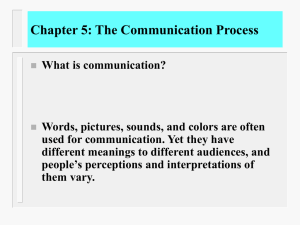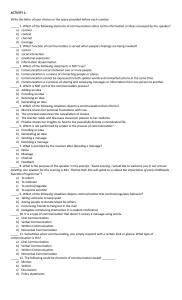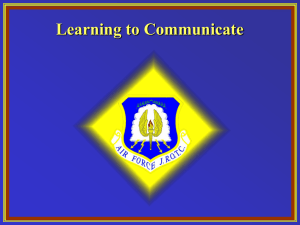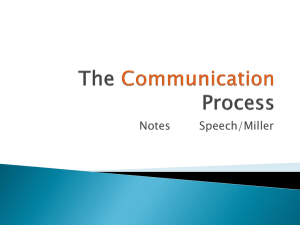A Communication Model
advertisement
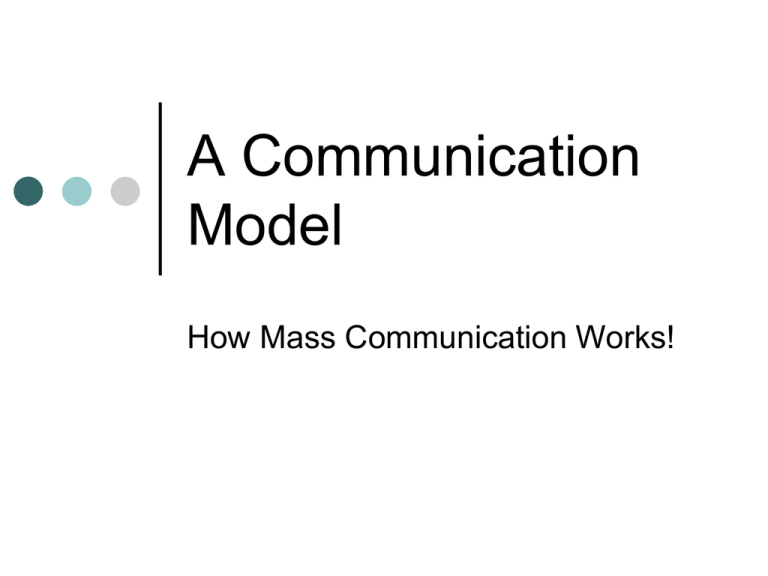
A Communication Model How Mass Communication Works! How Communication Works Elements of Communication The Source (Sender) – The person that creates the message The speaker transforms ideas and thoughts into messages and sends them to a receiver or audience. The speaker decides what messages are to be sent and how they will be sent. Encoding – The process of organizing the message, choosing the words and sentence structure and verbalizing the message Elements of Communication The Receiver (Audience) – The receiver interprets the message in ways that are unique to that person Decoding – Process of interpreting the message Although the sender/speaker may intend a message to carry a specific meaning, the receiver/audiences interprets the message based on their own experiences and attitudes Elements of Communication Feedback – The audience’s response to the message Can be conveyed both verbally and non-verbally Often indicates whether a speakers message has been understood Elements of Communication The Message – The content of the communication process: thoughts and ideas put into meaningful expressions Content can be expressed verbally and non-verbally. Miscommunication can happen when the audience misinterprets the speaker’s intended message or when the speaker misreads the audience feedback. Elements of Communication The Channel – Medium through which the speaker sends a message Live audience – Channel = air waves Telephone lines, televisions, computers, written correspondence Noise – Any interference with the message Physical sounds, psychological noise (emotions), environmental (room temp., etc.) How Communication Works Mass Communication Model GATEKEEPER SENDER MESSAGE ENCODING RECIEVER DECODING FEEDBACK The Terms SENDER: The announcer, station owner, writer, producers, artists, directors, actors, technicians: Those who produce the format, sound, and appearance of the message. RECIEVER: The audience: Those listening or watching the transmission of the message. The Terms MESSAGE: The programming – everything viewers/listeners hear/see. ENCODING: Taking the ideas and producing a message; the form the message takes. DECODING: How the audience interprets the message or program. The Terms FEEDBACK: How the audience responds; only reaches the gatekeeper. GATEKEEPER: Controls the flow of the messages; often the station programmer relays to senders. Differences With MASS COMM. there are multiple senders involved. There are also multiple receivers. Encoding is collaborative – listeners/watchers give mass feedback. Feedback Goes to the gatekeeper Delayed rather than immediate Distortedly negative Mass Communication Model GATEKEEPER SENDER MESSAGE ENCODING RECIEVER DECODING FEEDBACK
